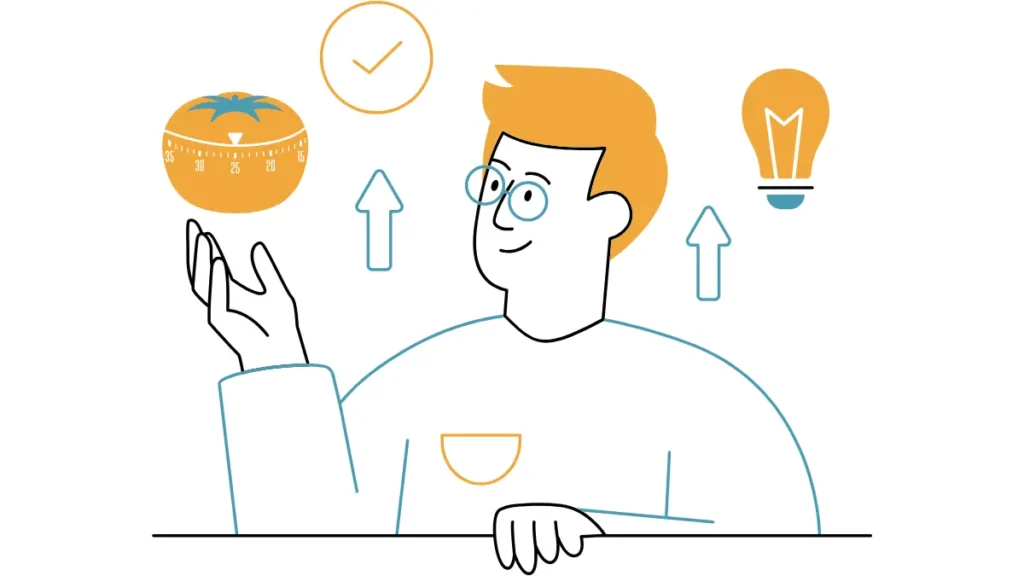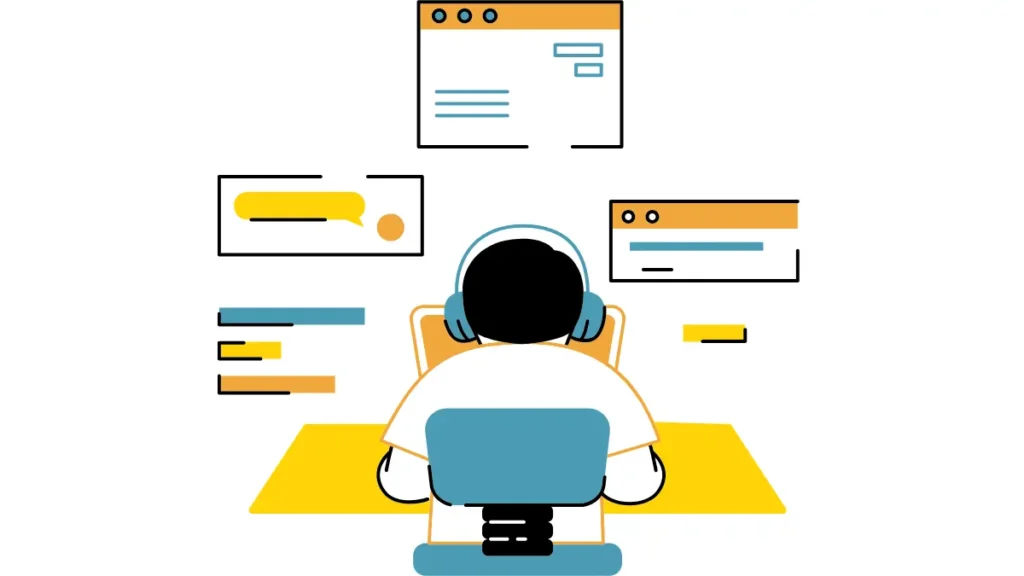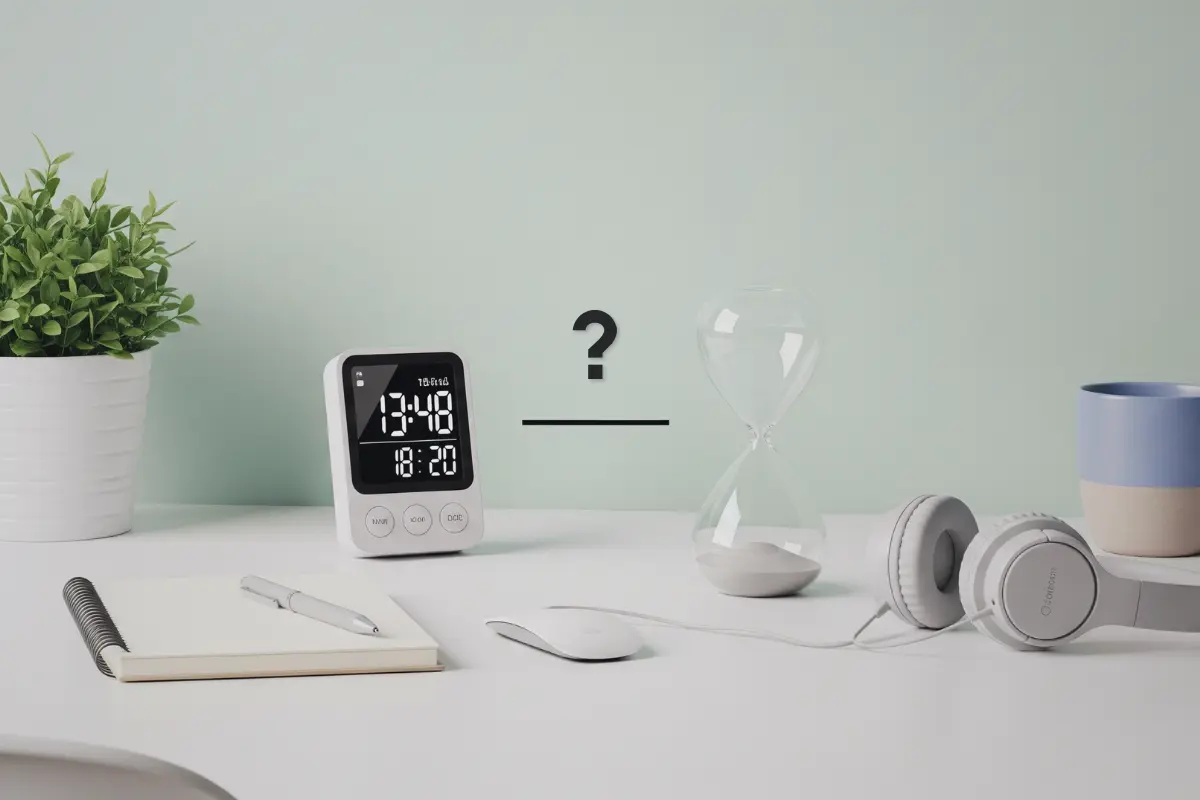Pomodoro vs Deep Work: Which One Actually Boosts Productivity?
If you’re comparing focus methods, two names dominate the conversation: the Pomodoro Technique and Deep Work. Both promise enhanced productivity—but they operate on opposite ends of the attention spectrum. One breaks time into short bursts. The other demands immersion for hours. So which one actually improves performance?
In this article, we’ll compare pomodoro vs deep work to uncover the key differences, strengths, and weaknesses of each. You’ll walk away with clarity on which method suits your tasks—and how to use them together for sustainable, high-performance output.
What Is the Pomodoro Technique?
How It Works and Why It’s Popular
The Pomodoro Technique, created by Francesco Cirillo, is a time management strategy that segments work into 25-minute intervals (called “Pomodoros”) separated by 5-minute breaks. After four Pomodoros, you take a longer break of 15–30 minutes.
Its simplicity is part of its charm: set a timer, focus, break, repeat. For those overwhelmed by long to-do lists or prone to procrastination, it lowers the psychological barrier to starting.
Key Benefits for Focus and Structure
The Pomodoro Technique helps reduce mental fatigue by offering structured rest. It minimizes decision fatigue, builds momentum, and makes task-switching more conscious. It’s a favorite among students, coders, and anyone juggling varied to-dos.
Because each block is time-bound, it’s particularly effective for repetitive tasks, shallow work, or early-stage focus training.
What Is Deep Work?
The Philosophy Behind Deep Work
Coined by productivity expert Cal Newport, Deep Work is the practice of sustained, distraction-free concentration on cognitively demanding tasks. Unlike time management hacks, it’s more of a mindset—a commitment to single-tasking at depth.
Deep Work requires preparation. You eliminate distractions, align your environment with your goals, and enter periods of uninterrupted focus. These sessions often last 90 minutes to 4+ hours.
Long Blocks and Cognitive Intensity
Deep Work is designed to push your executive function and access what psychologists call the flow state—a mental zone of heightened creativity, focus, and fulfillment. It builds mental endurance, sharpens your thinking, and helps create meaningful, high-leverage output.
This is where real progress happens: books are written, systems are built, and breakthroughs are made.


Pomodoro vs Deep Work: Key Differences
Focus Duration and Cognitive Load
The most obvious difference is time.
- Pomodoro: short bursts (typically 25 minutes)
- Deep Work: long sessions (90–240 minutes)
Pomodoro offers lighter cognitive load and frequent breaks, which helps you avoid burnout.
But the constant task-switching can fragment attention and pull your brain out of deep focus—especially since multitasking disrupts executive function and weakens your brain’s focus systems over time.
Deep Work, in contrast, increases cognitive load but also unlocks deeper concentration and higher-quality output.
Suitability for Different Tasks and People
Pomodoro productivity technique works best for small, defined tasks: email, admin, revisions, or ideation. It’s also ideal for those building their focus muscle.
Deep work productivity is ideal for work that requires strategy, problem-solving, or creativity—writing, designing, engineering, or business planning. It’s most effective for individuals who already have a system to manage distraction.
Flexibility, Flow, and Performance Output
Pomodoro is flexible. You can slot it into a packed schedule, use it to overcome inertia, or deploy it when your energy is low.
In the pomodoro vs deep work debate, if your goal is a flow state, the constant stopping in Pomodoro can backfire. Deep Work is designed to get you into that state—and keep you there. It leads to better ideas, faster execution, and less context switching.
When Pomodoro Works Best
Beating Resistance and Procrastination
If you’re battling resistance, task switching, or low motivation, the Pomodoro Technique is a powerful on-ramp. By breaking down work into short blocks, you reduce the psychological resistance to getting started. You don’t have to feel ready—you just have to do 25 minutes.
This also trains your brain to expect a break, reducing the friction of beginning difficult or boring tasks.
Starting Small: Building Focus Over Time
Many high-performers use Pomodoro as a training tool. You can gradually increase your focus blocks—starting with 25 minutes and working up to 60 or even 90. Over time, you transition into longer focus techniques like Deep Work.
For beginners or anyone rebuilding discipline, Pomodoro offers structure without overwhelm.


Why Deep Work Is More Powerful for Mastery
Mental Endurance and Flow States
While Pomodoro builds focus, Deep Work builds endurance. The ability to concentrate deeply for extended periods is increasingly rare—and increasingly valuable. It requires intention, training, and discipline.
But the reward is transformative. You produce work that’s not just done—but excellent. Flow states emerge, and you enter a rhythm that feels less like effort and more like expression.
This kind of focus improves your attention span, rewires your prefrontal cortex, and combats cognitive fatigue. It’s not just about doing more—it’s about doing better.
Deep Work as a Competitive Advantage
In a world of endless pings, sustained attention is leverage. Deep Work gives you an edge—not just in output, but in how you think. It sharpens clarity, builds intellectual resilience, and leads to breakthroughs most people never access.
It’s the best productivity method for those who want mastery, not just momentum.
Can You Combine the Two Techniques?
Pomodoro vs deep work is often framed as a choice—but the two can work together seamlessly.
Extended Pomodoros as Deep Work On-Ramps
One of the most effective ways to bridge the gap is by extending your Pomodoro blocks. Try working in 45–60 minute sessions with 10-minute breaks. These longer intervals ease you into deeper concentration without demanding full mental endurance upfront.
Over time, they can evolve into full Deep Work sessions.
This hybrid approach offers both structure and cognitive intensity—ideal for professionals and creatives building a high-performance rhythm.
Crafting Your Personal Focus Rhythm
Focus is personal. Some days demand precision sprints; others call for immersive dives. The key is to craft a personal focus rhythm that adapts to your goals, tasks, and energy levels.
Use Pomodoro to warm up. Use Deep Work to perform. Design a system that supports distraction management, not just time tracking.
Final Verdict: Choose the Right Tool for the Work
Focus Is a Skill—Not a Timer
The truth is, pomodoro vs deep work isn’t a battle. It’s a choice based on what your work demands and what your mind can sustain. Pomodoro builds habits. Deep Work builds excellence.
But neither will work without discipline, boundaries, and intent.
You don’t need more hacks. You need to treat focus like a skill.
Design Systems That Serve Performance, Not Just Productivity
At Thovia, we don’t chase efficiency for its own sake. We design systems that serve real output, real clarity, and real results. Whether you choose the Pomodoro productivity technique or embrace long focus sessions, what matters is this:
Your system should help you perform, not just stay busy—in the debate of pomodoro vs deep work, it’s about alignment, not absolutism.
Frequently Asked Questions
Can you use the Pomodoro Technique for Deep Work?
Not directly. Traditional Pomodoro blocks (25 minutes) are too short to reach the cognitive depth Deep Work requires. Even 45–60 minute blocks, while better, don’t fully unlock flow states or deep cognitive immersion. However, they can serve as a useful bridge. If you’re building focus stamina, extended Pomodoros offer structure while gradually training your mind for longer, uninterrupted sessions. The goal is to transition from sprints to sustained focus over time.
Which is more effective for productivity: Pomodoro or Deep Work?
It depends on the task. Pomodoro is excellent for quick wins, structure, and overcoming resistance. Deep Work is built for mastery, strategy, and high-leverage execution. In the pomodoro vs deep work conversation, the most effective method is the one that aligns with your goals, energy, and focus capacity. Use Pomodoro to start. Use Deep Work to excel.
How long should a Deep Work session be?
Most effective Deep Work sessions last between 90 to 240 minutes. This window allows your brain to shift into a flow state, eliminate context switching, and generate meaningful output. The key is not the length—but the depth and consistency of your attention.






